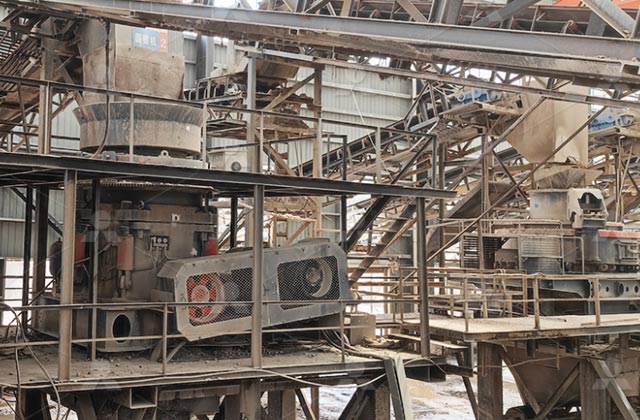In the mining, construction, and aggregate industries, fine crushing is a critical stage in the production process. It involves reducing materials to finer sizes, typically below 25 mm, to prepare them for final use or further processing. This stage comes after primary and secondary crushing and requires crushers that are specifically designed for fine particle size reduction. Here’s an overview of the most common types of crushers used for fine crushing:

1. Cone Crusher
Cone crushers are widely used for fine crushing of medium-hard to hard materials. They work by compressing the material between a moving piece of steel (the mantle) and a stationary piece (the concave). The crushing chamber narrows down as the material moves through, crushing it into smaller sizes.
Key Features:
-
Suitable for crushing materials with medium to high hardness (e.g., granite, basalt, iron ore).
-
Provides a consistent particle size with good shape.
-
Adjustable crushing chamber to control final product size.
-
High capacity and efficiency.
Applications: Mining, aggregate production, construction materials.
2. Impact Crusher
Impact crushers use impact force to crush materials. Material is fed into a chamber where it is struck by rapidly rotating hammers or blow bars attached to a rotor, breaking it along natural fissures and producing fine material.
Key Features:
-
Suitable for soft to medium-hard materials (limestone, coal, gypsum).
-
Produces well-shaped particles.
-
Good for materials that tend to be flaky or elongated.
-
Can be used for primary, secondary, or tertiary crushing.
Applications: Recycling, sand and gravel production, limestone crushing.
3. Vertical Shaft Impact Crusher (VSI)
VSI crushers use a high-speed rotor to throw material against a hard surface, causing particle-on-particle crushing which produces very fine and well-shaped particles. This method is highly efficient for fine crushing and shaping.
Key Features:
-
Ideal for producing high-quality manufactured sand and fine aggregates.
-
Produces cubical-shaped particles.
-
Adjustable rotor speed and crushing chamber design.
-
Low wear costs with proper wear-resistant materials.
Applications: Sand making, concrete aggregates, industrial minerals.
4. Hammer Crushers
Working Principle:
Hammer crushers use high-speed rotating hammers to impact the material, crushing it by sudden impact. The hammers swing on a rotor shaft and strike the material as it enters the crusher.
Advantages:
-
Simple structure.
-
High reduction ratio.
-
Suitable for soft to medium-hard materials.
Applications:
-
Crushing limestone, coal, and gypsum.
-
Producing fine materials for cement and chemical industries.
Choosing the Right Crusher for Fine Crushing
When selecting a crusher for fine crushing, consider:
-
Material hardness and abrasiveness: Hard materials require more robust crushers like cone crushers.
-
Desired particle size: VSI and roll crushers are excellent for very fine products.
-
Capacity needs: Some crushers handle higher throughput better.
-
Moisture content: Roll crushers handle sticky and wet materials better.
-
Product shape requirements: Impact crushers tend to produce more cubical shapes.
Choosing the right crusher for fine crushing depends largely on the material type, required particle size, production capacity, and the shape quality needed. Impact crushers excel in producing fine, cubical particles for softer materials, while cone crushers provide consistent size reduction for harder rocks. Roller crushers and fine jaw crushers offer other specialized options, particularly when dealing with specific materials or conditions.
Understanding the characteristics of each type helps industries optimize their crushing processes, improve efficiency, and produce high-quality end products.

